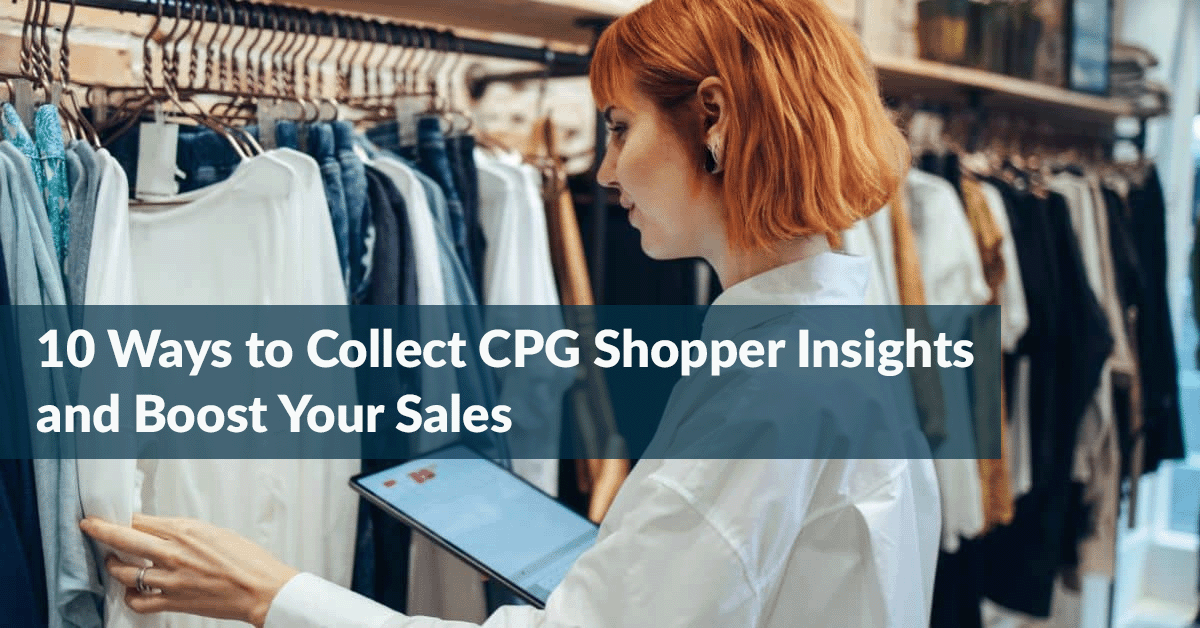Shopper insights offer an invaluable window into how your customers think – from their favorite products and preferred shopping times to average weekly spend.
With this information, you can deliver better products, more enriching customer experiences, and more engaging contests and promotions. But before we get ahead of ourselves, we need to answer the million-dollar question: where do you get these insights? And how do you use them?
What are Shopper Insights?
Shopper insights refer to any information that helps you better understand your customers. They fall into two categories:
- Quantitative – hard data, such as product performance, demographic information, and shopper behavior.
- Qualitative – experiential insights based on customer reviews, surveys, and interviews.
Beyond simply showing you which products sell well, shopper insights tell you why. They reveal the factors that have the biggest influence on purchasing decisions, how shopper behavior varies across segments, and how preferences change over time. This helps you:
- Market the right products to the right shoppers
- Create more personalized experiences, interactions, and offers
- Adapt to current market needs
- Identify and capitalize on emerging trends
Shopper insights vs consumer insights
Shopper insights focus on the shopper – the steps they take on their path to purchase and the factors that influence their decisions – not the end user. These aren’t always the same people. Consider someone buying jewelry for their spouse or a parent looking for back-to-school supplies.
10 Sources of Shopper Insights (and How to Use Them)
Just as there’s more than one way to peel a potato, as the admittedly starchy saying so eloquently expresses, there are multiple options for CPG brands looking for detailed shopper insights.
#1 Website Data
Every time someone engages with your website, digital marketing campaigns, or social media channels, they leave a trace. Tools like Google Analytics and Google Search Console offer insights into top pages, keywords, and visitor flows. Other tools, like Crazy Egg and Hotjar, record user sessions and provide heat maps that show what attracts the most clicks and influences their browsing behavior.
In turn, this allows you to:
- Identify your most popular products
- Spot patterns and trends in shopper behavior
- Determine what keywords your visitors use to find your site on Google
- Understand how shoppers navigate your website
#2 Competitor Data
Another area to start with is competitor data, which is a valuable source of shopper insights. Simply taking the time to review your competitors’ product pages and marketing campaigns can show you where you’re doing well and where you can improve.
Aside from manual observations, keyword research tools like Semrush and Ahrefs provide empirical competitor data that you can use to improve your website. For example, where you rank on Google compared to your competitors or which keywords they target. Tools like Similarweb provide a variety of web analytics, benchmarking data, and consumer insights.
#3 Purchase Data Analytics (from Shopper Receipts)
It’s easy to dismiss receipts as a simple slip of paper that most people throw in the trash. But you can turn them into a valuable source of shopper insights by analyzing the purchase data they contain.
It works like this:
- The shopper makes a qualifying purchase
- They take a picture of their receipt
- They submit the image to your website
- You validate the purchase using a receipt processing platform
- The shopper receives their reward
In exchange, you gain access to a potential treasure trove of first-party data insights.
Receipts offer a glimpse into individual shopper behavior. They show you the customer's preferred products, average basket size and spend, competitor share of business, and even which stores they visit and when. This enables you to deliver more tailored messages and offers that resonate with your shoppers.
New shopper marketing advertising channels like Payment Media Networks allow brands to gain meaningful, actionable insights right down to SKU-level basket data from an audience of over 200 million (US) highly engaged shoppers, via banks.
#4 Social Media
Whether sharing their thoughts on X (formerly Twitter), looking for inspiration on Instagram, or purchasing products on Facebook Marketplace, shoppers love to engage with brands on social media. And this makes it a goldmine for shopper insights.
If there’s one place shoppers feel comfortable giving their unfiltered opinions, it’s social media. Monitoring comments in your social feeds reveals what people really think about your products and brand on an emotional level. For more detailed insights, you can use social media analytics tools to measure engagement and campaign performance across channels.
Together, these insights help you refine your messaging and build stronger shopper relationships.
#5 Customer Reviews
Like social media, customer reviews are an excellent source of authentic customer feedback. Yelp, TrustPilot, Better Business Bureau, and other dedicated customer review sites offer a fast and efficient way to see what people like and don’t like about your products.
Reviews effectively pinpoint specific product features that resonate with your shoppers and what they prefer about your competitors to inform future R&D.
#6 Shopper Surveys
Shopper surveys have been around for years and are among the most effective ways to collect honest feedback. With surveys, you can customize the format and questions to get the insight you need.
A short, multiple-choice survey might be good for gauging general brand sentiment, whereas an open-ended survey can help you delve deeper into specific issues. For example, how customers feel about a recent product update. Combine surveys with detailed interviews to add more qualitative shopper insights.
#7 Focus Groups
In-person and online focus groups allow you to gather valuable qualitative shopper insights at scale. Whether you're looking for feedback on a specific product or want to better understand consumer behaviors, preferences, attitudes, motivations, and opinions, they help you get under your shoppers' skin.
As a group activity, they're more dynamic than one-to-one shopper interviews or surveys. Participants can build on each other's responses, share anecdotes, and express opinions that might not emerge in a more structured survey format. This back-and-forth interaction helps you uncover even deeper insights.
#8 Shop-alongs
To really understand how shoppers behave when they're perusing your shelves, consider running a shop-along.
Shop-alongs are an evolution of the traditional face-to-face interview. Only, instead of sitting down with a shopper and asking them about their experiences, you accompany them as they navigate your store to gain a deeper understanding of how they behave in an authentic retail environment.
Among a wealth of insights, shop-alongs reveal more about your shoppers' challenges, preferences, needs, and decision-making processes. This helps you improve everything from packaging design to product placement and enables you to tailor your marketing strategies more effectively.
#9 Ethnographic Research
Ethnographic research is all about observing your shoppers in their daily lives, offering a window into their routines, preferences, and motivations.
More than that, ethnographic research reveals the cultural and social factors that influence attitudes and behaviors, providing valuable insights into the emotional aspects of the shopper experience. It captures subtleties quantitative research methods often miss, so you can build a holistic understanding of your shoppers and create more authentic marketing strategies that align with their reality.
#10 Eye-tracking and Facial Coding Technology
Among the most high-tech sources of shopper insights, facial coding and eye-tracking technology measure the impact of stimuli on your shoppers. For example, advertising, marketing, and packaging design.
Eye-tracking technology monitors the shopper's gaze to reveal what grabs their attention, making it particularly effective at analyzing product packaging and placement. Facial coding technology analyzes facial expressions to capture and interpret emotional responses to your products and marketing materials.
Combining the two technologies gives you deeper, more impartial insight into emotional engagement among your shoppers. Viewed alongside qualitative information gathered from surveys, focus groups, and other sources, these high-tech solutions enable you to optimize packaging designs, in-store layouts, and marketing strategies to better influence shoppers at the point of purchase.
Variety is the Spice of Life – and the Key to Marketing Success
You can’t rely on a single source of shopper insights to truly understand what makes them tick.
The most successful CPG brands take a more holistic view, combining insights from multiple sources across the buyer’s journey to pinpoint the factors driving shopper behavior. In turn, this allows them to create better products meet and exceed expectations, driving long-term sales and customer loyalty.
To learn how to gain shopper insights across a variety of retail establishments with targeted campaigns, explore our receipt marketing solutions.






